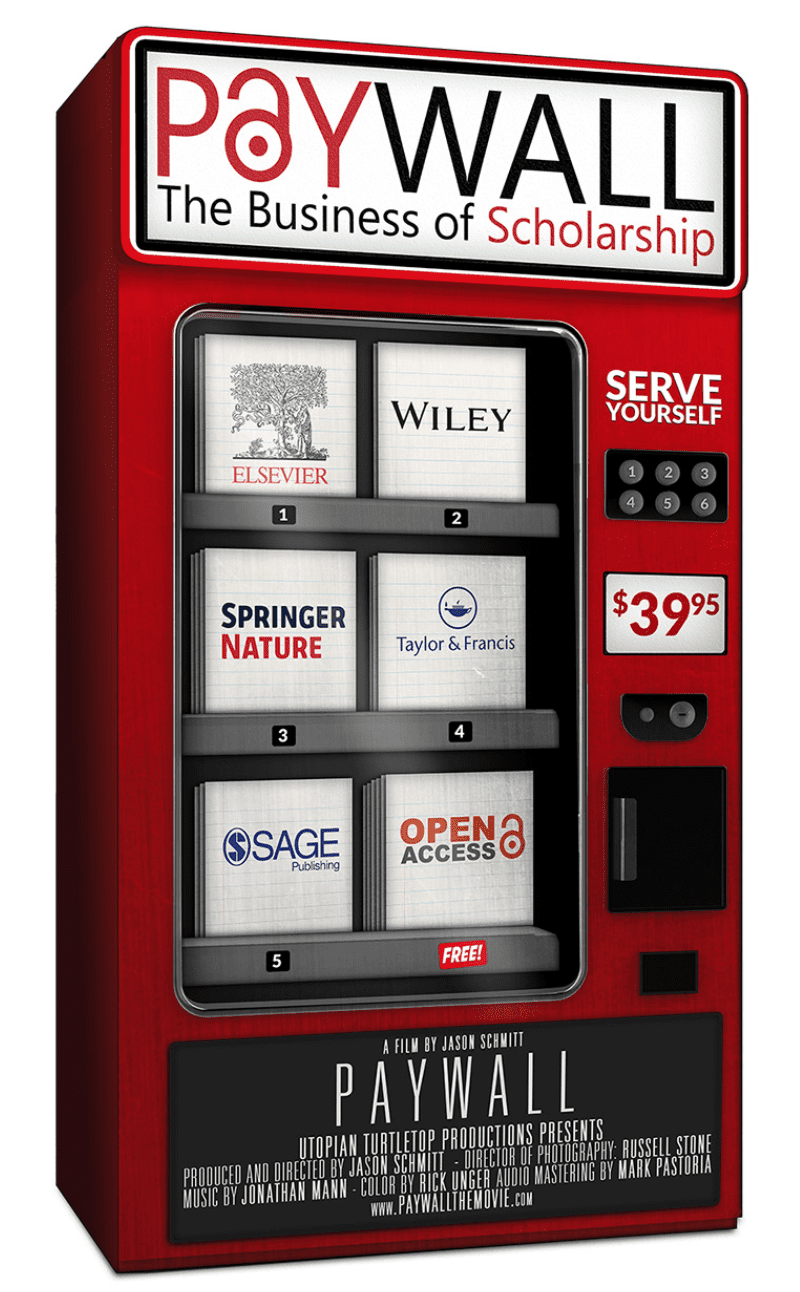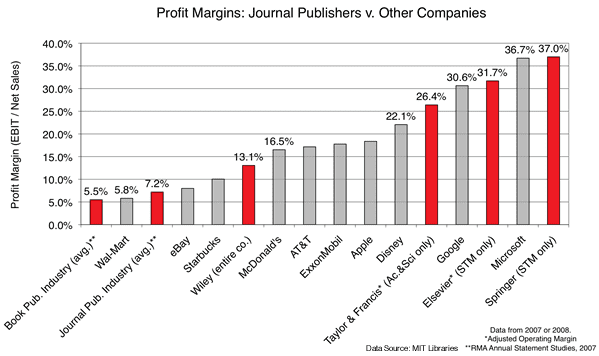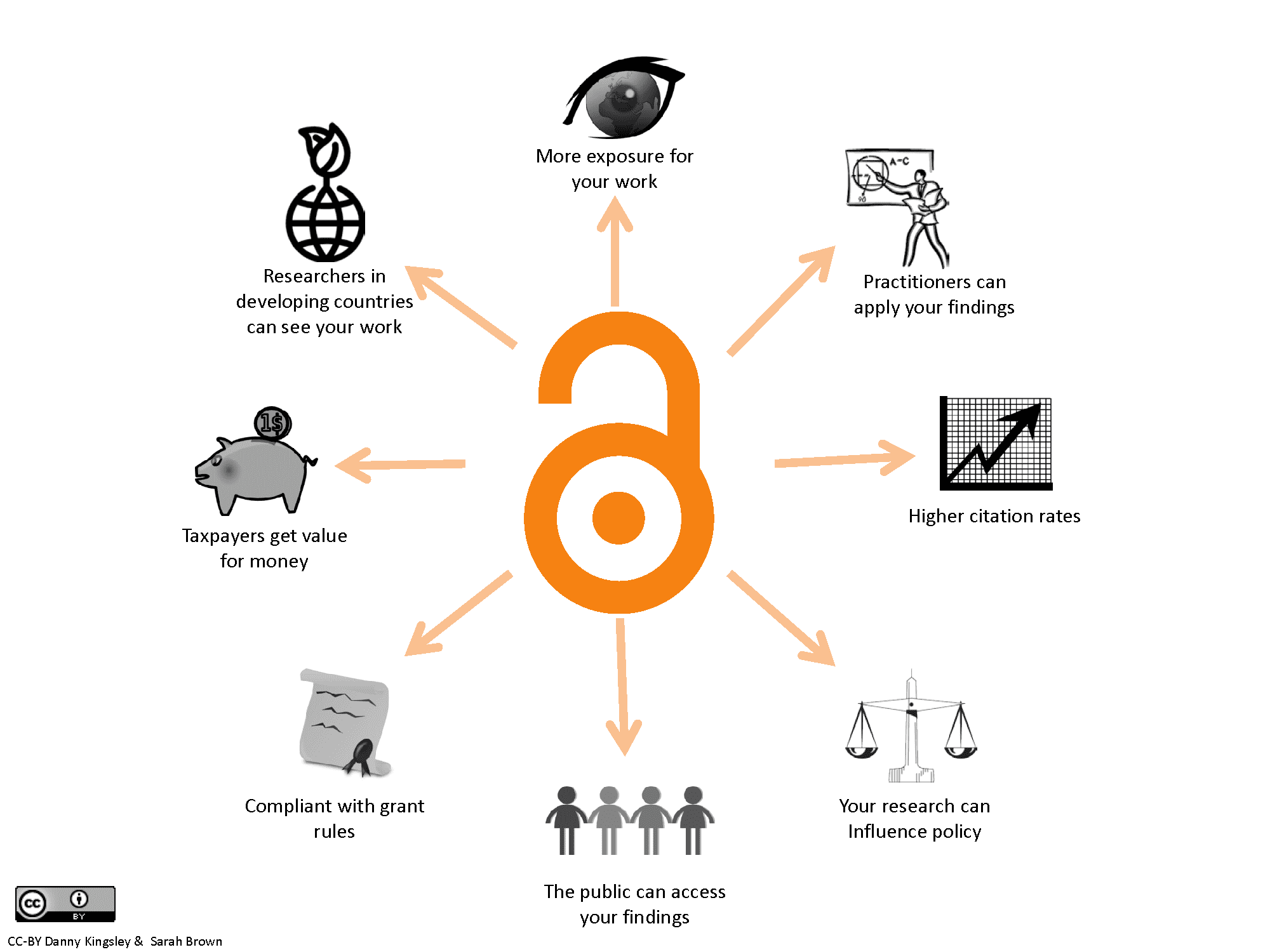Science Behind a Paywall
Science – Aiming to solve the world's problems and share its knowledge with you, all for the low price of $39.95, per journal article that is.
Scientific journal articles are essentially like newspapers for scientists, updating the community on the latest findings, methods, and events happening all over the world. Yet access to most scientific journals is incredibly limited to the general public, the tech industry, politicians, and essentially ANYONE not in the academic realm. And even if you are in academics, you're not necessarily swimming in a sea of free knowledge; you're still limited to what you can access, leaving researchers all over the globe with content knowledge gaps restricting the growth of research.

For years scientific organizations have been pointing to these large gaps in accessing knowledge amongst the scientific community. In 2001, the World Health Organization (WHO) showed that 56% of research institutions in low-income countries had no subscriptions to international scientific journals. While some steps have been taken to rectify this situation, most low- and middle- income countries (LMICs) still don't have access to current content published in scientific journals. How can we expect universities in LMICs or even in the U.S. to subscribe to all journals when “the cost of subscribing to all research journals has risen by 300% above inflation since 1986 while academic library budgets have only risen by 79% total?†asked Noah Berlatsky of The Atlantic.
“Scholarship must be open in order for scholarship to happen.†– Brian Nosek, Director, Center for Open Science, Professor at University of Virginia
In addition to the rise of journal costs, subscriptions to scientific journals operate like a cable subscription service, giving libraries little input into what they're signing up for. It's like having a package filled with mediocre or no-name channels on Directv, and getting access to your favorite channels, like HBO, is an extra added fee.
So each year when it's time to renew or pick a subscription package university libraries end up signing contracts with publishers having little leverage over the scientific journals that come in their “packageâ€. Not to mention the publishers can remove or give access to any scientific journals at any time without consent. And to top it all off the prices libraries pay to buy journal subscriptions are usually hidden by a non-disclosure agreement, allowing the publishers to name their price to any given institution. Therefore even the basic cost for publishers to produce their content is unknown.
Given all this, why do we continue to argue about making science Open Access (OA) to all? Do we not conduct research to help solve humanity's problems around the world – to cure diseases, to diminish poverty, to fight pollution, to advocate for world health, etc.?

The Price of Prestige
“Academic publishing journals are a $10 billion dollar a year revenue producing industry.†– Heather Joseph, Executive Director SPARC. Scientific journals have a larger profit margin (30-40%) than some of the biggest tech companies, including Apple, Google, and Amazon. So convincing these publishers to freely and openly share their content is not an easy task.
The thing is, humanity's issues are not solved in a bubble. Open access will allow scientists across the globe to work on world issues in tandem, regardless of the wealth of their home country. Together, we have a hope of solving these decades-long problems. We must build on current and past knowledge to make progress towards open access. “To solve these issues you need to make sure everyone has access, not just rich countries, not just Ph.Ds,†says Cable Green, Director of Open Education Creative Commons. When we don't share our science, the probability of us solving world problems becomes increasingly unlikely.
Creating a Way to Democratize Information
All the frustrations and lack of access have created a movement across Europe for total open access. This progressive open-access initiative is working to make Open Access a reality by 2020.

This Open Access initiative has the power to create some amazing benefits in the scientific community:
- Increases Reproducibility – Allowing all researchers to have equal access to scientific findings allows others to conduct scientifically relevant experiments and increase reproducibility in the field. Researchers around the globe must be able to reproducibly get the same results and draw the same conclusions to avoid making premature statements about a drug’s efficacy, for example, or before implementing ideas in the public realm.
- Decreasing Plagiarism – With open data sets, it's easier to use another academic's data and give proper attribution.
- Detecting Fraud – With open data sets researchers can verify the accuracy of the data used in the study and determine when data has been fabricated.
- Low-Income Countries Can View Work – Allowing all researchers to access data provides more equal opportunity for relevant science to happen in any country.
- Public Can Access Data – The public can read the content that their tax dollars are paying for and make their own informed decisions about the scientific content being produced.
- Research can Influence Policy – If science is hidden behind paywalls we can't expect policymakers to have access to relevant content to make decisions.
- Higher Quality Work – Allowing scientific peers to access all work increases the value of peer review and hold scientific work to a higher standard.
By 2020 European universities could be operating in an Open Access world. Will the U.S. be next or will we continue to pay for scientific journal access like our cable subscriptions?
“By 2020 scientific publications that result from research funded by public grants provided by participating national and European research councils and funding bodies, must be published in complaint Open Access Journals or on compliant Open Access Platforms.†– The main principle of cOALition S
Making scientific progress and creating a space for innovation requires integrative and collaborative research. When scientists share their findings with other researchers and allow them access to appropriate and relevant data, science progresses. When researchers have limited access to current findings and knowledge, they perform experiments with gaps and missing elements in their scientific background. Knowledge should not be hidden behind paywalls. Until we have widespread Open Access we will continue to propagate this global problem – scientists working to solve the world's issues with missing pieces.
Featured Image Credit: Amy (Bio Lab) Via Flikr Creative Commons
 Amanda Shaver is a Ph.D. Candidate in the Dept. of Genetics at the University of Georgia studying metabolomics in C. elegans. She enjoys dancing, photography, and playing with her dog Mr. Peabody. Amanda currently serves as Editor-in-Chief for the Athens Science Observer and is on the Athens Science Café Programming Board. You can email her at Amanda.shaver@uga.edu or follow her on Twitter @AOShaver. More from Amanda Shaver.
Amanda Shaver is a Ph.D. Candidate in the Dept. of Genetics at the University of Georgia studying metabolomics in C. elegans. She enjoys dancing, photography, and playing with her dog Mr. Peabody. Amanda currently serves as Editor-in-Chief for the Athens Science Observer and is on the Athens Science Café Programming Board. You can email her at Amanda.shaver@uga.edu or follow her on Twitter @AOShaver. More from Amanda Shaver.
About the Author
- athenssciencecafehttps://athensscienceobserver.com/author/athenssciencecafe/April 17, 2020
- athenssciencecafehttps://athensscienceobserver.com/author/athenssciencecafe/April 12, 2020
- athenssciencecafehttps://athensscienceobserver.com/author/athenssciencecafe/April 3, 2020
- athenssciencecafehttps://athensscienceobserver.com/author/athenssciencecafe/March 30, 2020







